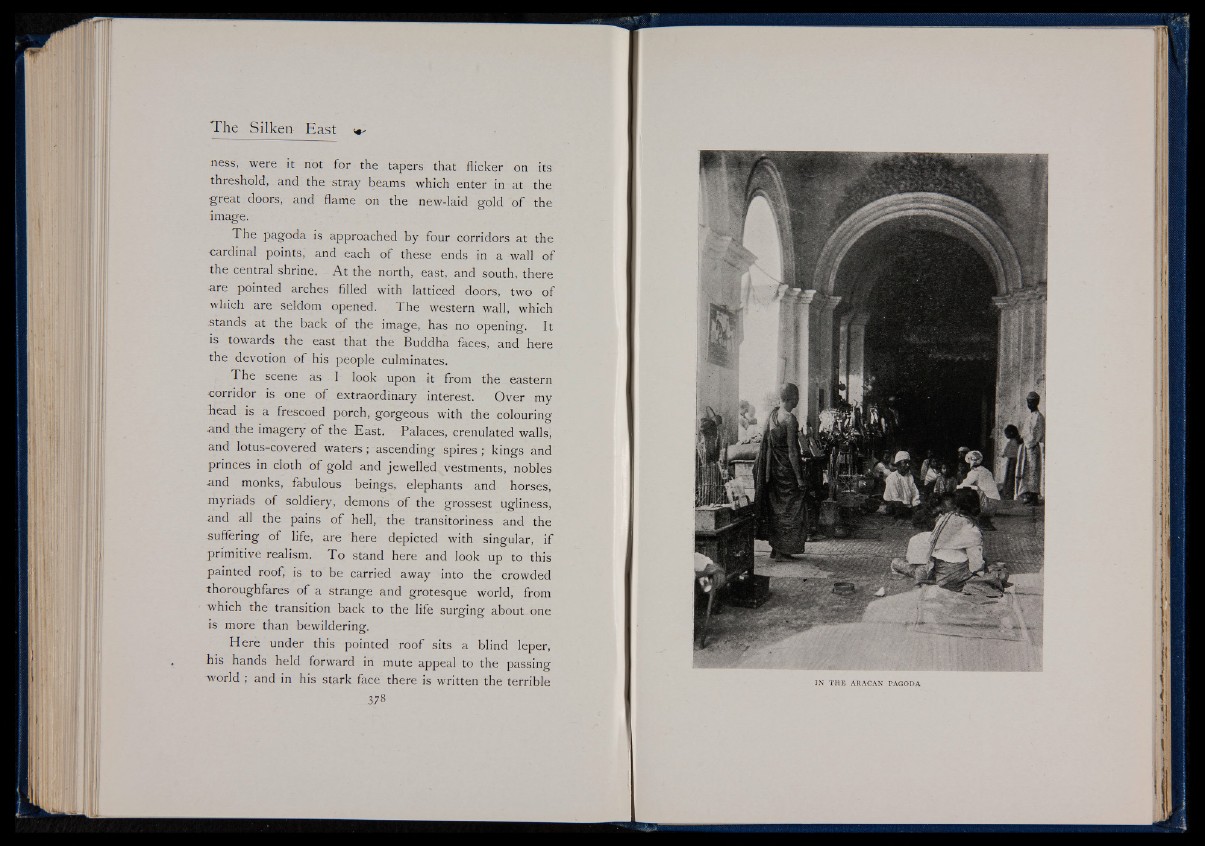
ness, were it not for the tapers that flicker on its
threshold, and the stray beams which enter in at the
•great doors, and flame on the new-laid gold of the
image.
The pagoda is approached by four corridors at the
-cardinal points, and each of these ends in a wall of
the central shrine. At the north, east, and south, there
are pointed arches filled with latticed doors, two of
which are seldom opened. The western wall, which
.stands at the back of the image, has no opening. It
is towards the east that the Buddha faces, and here
the devotion of his people culminates.
The scene as I look upon it from the eastern
-corridor is one of extraordinary interest. Over my
head is a frescoed porch, gorgeous with the colouring
and the imagery of the East. Palaces, crenulated walls,
and lotus-covered waters; ascending spires; kings and
princes in cloth of gold and jewelled vestments, nobles
and monks, fabulous beings, elephants and horses,
myriads of soldiery, demons of the grossest ugliness,
and all the pains of hell, the transitoriness and the
.suffering of life, are here depicted with singular, if
primitive realism. To stand here and look up to this
painted roof, is to be carried away into the crowded
thoroughfares of a strange and grotesque world, from
which the transition back to the life surging about one
is more than bewildering.
Here under this pointed roof sits a blind leper,
his hands held forward in mute appeal to the passing
-world ; and in his stark face there is written the terrible
378